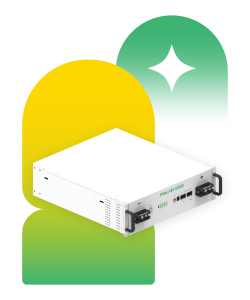As the demand for energy efficiency and stability increases, many businesses and homeowners are asking, what is hybrid energy storage system, and how can it improve energy usage? At Polar ESS, we are committed to providing advanced solutions that combine different types of energy storage and intelligent control technologies to help users manage electricity more effectively. A hybrid energy storage system typically integrates lithium-ion batteries with solar inverters and energy management software to balance renewable energy input and real-time consumption.
We’ve designed our products to support homes and commercial buildings with variable energy loads. Hybrid storage systems allow users to store excess solar energy during the day and use it later during peak hours or at night. This reduces reliance on grid power and improves energy self-sufficiency. Unlike single-source storage solutions, hybrid systems provide more flexibility and efficiency, especially when energy demands fluctuate or when backup power is essential.
Table of Contents
ToggleWhat Makes Hybrid Storage Different from Conventional Systems
So exactly what is hybrid energy storage system, and how does it differ from traditional setups? A conventional storage solution typically involves one battery type and limited control logic, which may not perform optimally in complex energy environments. In contrast, hybrid systems like the ones we offer at Polar ESS integrate high-efficiency lithium batteries with advanced energy control modules. Our systems are compatible with solar inverters and feature built-in battery management systems, making the entire setup smarter and safer.
One of our key products, for example, combines a low-voltage lithium battery with a modular design that allows flexible installation and system expansion. It’s suitable for residential, small business, and off-grid applications. When paired with hybrid inverters and our smart software, it allows users to monitor energy flow, control discharge rates, and improve battery performance over time. By integrating software, storage, and solar, we deliver a truly hybrid energy experience.
Comparison: Hybrid vs Traditional Energy Storage
Traditional systems often struggle with inefficiencies when managing inconsistent energy inputs from renewable sources. Hybrid systems, however, adapt better to energy fluctuations and help users reduce utility bills. Our hybrid solutions offer the advantage of multiple energy input paths, enhanced energy scheduling, and optimized load management. These features are particularly important in environments where power reliability is critical or where energy costs are high during peak demand periods.
At Polar ESS, our hybrid storage systems provide users with more than just batteries—they offer a complete solution that includes lithium-ion cells, smart controls, inverter compatibility, and real-time software analytics. Whether for home energy backup or business energy savings, our hybrid storage technology ensures a stable and flexible energy environment.
Conclusion
At Polar ESS, we design and deliver hybrid energy storage systems that are tailored for today’s energy challenges. For those wondering what is hybrid energy storage system, the answer lies in smart integration—combining batteries, solar, and software to build a reliable and adaptive power solution. Our products help users achieve energy independence, reduce costs, and enhance grid resilience.


